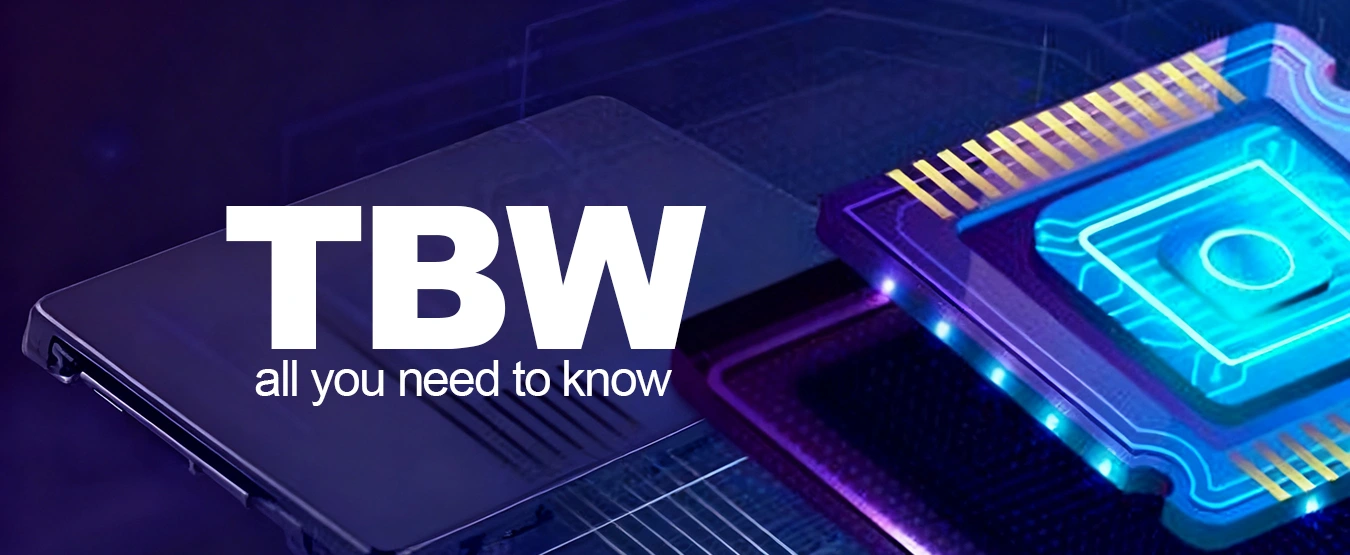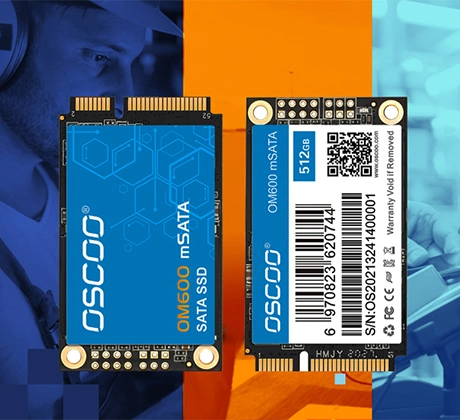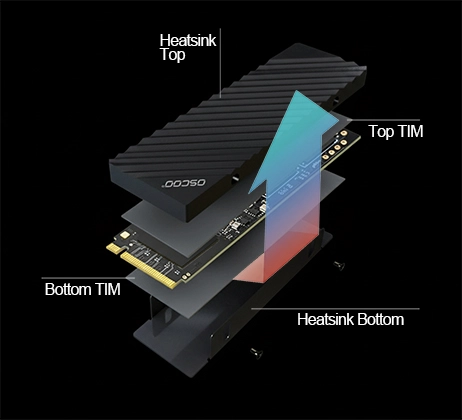When you choose or use a Solid State Drive (SSD), you might come across a technical parameter: TBW. It stands for “Total Bytes Written” and is a key metric for measuring an SSD’s lifespan. Many users find this confusing, unsure of what it really means, and some even worry that their drive will wear out quickly. This article will clearly explain TBW to help ease your concerns and allow you to use your storage device with more peace of mind.

What is TBW?
TBW is the abbreviation for “Total Bytes Written”. This number directly represents the total amount of data that an SSD can safely endure being written to it over its entire lifespan. Its basic unit is the terabyte (TB). 1 TBW means 1 terabyte of data can be written to the drive. We focus on the amount written rather than read because the key factor determining SSD lifespan is the number of write operations to its flash memory chips, not read operations. Therefore, TBW acts like an official mileage counter for lifespan, providing a clear, quantifiable measure of the drive’s durability.
Why Do SSDs Have a TBW Limit?
The lifespan limit of an SSD is not an artificial barrier set by manufacturers but is determined by the physical properties of its core storage medium—NAND flash memory. The basic storage unit of NAND flash is a floating-gate transistor, which stores data by trapping electrons. The process of writing and erasing data is essentially an electrical operation on this cell. Each operation causes tiny, irreversible damage to the cell’s oxide layer.
As the number of operations increases, the oxide layer gradually degrades, eventually causing the storage cell to fail, meaning it can no longer reliably hold an electrical charge. This process is similar to repeatedly writing with a pencil and erasing on paper; the paper will eventually wear thin and tear from the friction.
To quantify this wear, the industry introduced the concept of the P/E cycle (Program/Erase cycle). This refers to the complete process of a storage cell being fully written to and then completely erased once. Different types of NAND flash have significantly different endurance levels, measured in how many P/E cycles their cells can withstand. This mainly depends on whether a cell stores 1 bit of data or multiple bits.
The TBW parameter is a theoretical safe value pre-calculated by drive manufacturers based on the type of NAND flash used, the total capacity, and internal optimization algorithms. It means that within this amount of written data, all the drive’s storage cells should operate within their designed endurance range, ensuring data integrity and reliability. In essence, TBW is a direct representation of this physical wear on the product specification sheet.
Why Should We Care About TBW?
For the vast majority of everyday users, there’s no need to be overly anxious about TBW. A common misconception is that an SSD will suddenly fail once it reaches its TBW limit. In reality, for most computers used for web browsing, office work, and media consumption, the annual amount of data written is far below the SSD’s designed lifespan. You will likely upgrade and replace the drive long before you come close to hitting its write limit. Therefore, TBW should be understood more as an indicator of an SSD’s durability and quality grade, rather than a countdown timer hanging over your head.
However, paying attention to TBW is crucial for specific user groups. If you are a professional video editor, 3D animator, or software developer whose daily work involves frequently writing and erasing large project files, this high-intensity write activity will accelerate SSD wear. For these content creators, choosing an SSD with a high TBW means a longer stable production cycle and more reliable data security, which directly impacts work efficiency and asset safety.
Similarly, heavy gamers should also consider it. Modern games have large installation sizes, coupled with frequent updates, patches, automatic saves during gameplay, and mod file read/writes, all of which generate significant data writes. While individual operations may not be as extreme as video processing, the cumulative effect over time represents a considerable burden.
TBW provides us with an objective ruler to measure SSD health. Through accompanying monitoring software, you can clearly see the current total bytes written to the drive and its estimated remaining lifespan, helping you understand your device’s condition.
Factors Affecting TBW Value
An SSD’s TBW value is not set arbitrarily; it’s determined by several core factors. Understanding these can help us make smarter choices when purchasing.
Type of NAND Flash
Different types of flash memory have inherent differences in physical endurance.
- Single-Level Cell (SLC) has the longest lifespan (but also the highest cost) because each cell stores only 1 bit of data, making state judgment very simple and clear.
- Multi-Level Cell (MLC) has the next best endurance, storing 2 bits per cell.
- Triple-Level Cell (TLC) is the mainstream in consumer market, which offers a good balance between capacity, cost, and lifespan.
- Quad-Level Cell (QLC) pushes further for capacity and cost advantages, but the endurance of its individual cells is relatively the lowest.
Therefore, all else being equal, a drive using SLC chips will have the highest TBW, while a QLC product will have a relatively lower TBW.
Drive Capacity
This is an often overlooked but extremely important point. TBW is a total value, and write operations are shared across all the flash memory chips on the drive. A larger capacity SSD has more flash memory chips. When writing data, the controller chip can use algorithms to distribute these write tasks more evenly across all available chips, thereby slowing down the wear on any single chip. It’s like having a large team complete a task compared to a small team doing the same work—each person’s burden is much lighter. Therefore, for the same model of SSD, the 2TB version will typically have a much higher TBW than the 500GB version.
Manufacturer's Engineering Expertise
A good controller chip doesn’t just handle data transfer. Its core role lies in its built-in intelligent algorithms. Advanced wear-leveling algorithms ensure that every flash memory cell is used evenly, preventing some cells from being worn out prematurely. Efficient garbage collection mechanisms promptly clean up invalid data, reducing unnecessary additional write operations. Furthermore, the extra space reserved by manufacturers at the hardware level also plays a role. This over-provisioning is invisible to the user, but it provides more room for wear leveling and garbage collection, acting like a durability buffer pool that effectively increases the overall TBW lifespan.
The 'Tiers' of TBW
While there isn’t an absolute official industry standard, based on target market, durability requirements, and price positioning, SSD TBW values naturally fall into several relatively clear tiers.
Consumer-grade SSDs target average individual users. These products primarily aim to offer sufficient performance and reliability at a reasonable price to meet everyday computing, entertainment, and light creative needs. Their TBW range is usually quite broad. For a 1TB capacity consumer SSD, the TBW specification typically ranges from about 300 to 800 TBW. This number is more than enough for the vast majority of home and office users, ensuring stable operation throughout the normal computer replacement cycle.
Professional or Workstation-grade products. These SSDs target professional video editors, engineers, researchers, and advanced enthusiasts. Their workflows often involve continuously processing very large files, placing extremely high demands on storage throughput, stability, and lifespan. Therefore, professional SSDs not only have more powerful performance but also significantly higher TBW endurance than consumer products. Again using 1TB capacity as an example, their TBW specifications often start from 1000 and can reach several thousand.
Enterprise-grade SSDs. These are designed for 24/7 uninterrupted operation in data centers or server environments, handling concurrent read/write requests from many users. The extreme usage environment dictates that enterprise SSDs have the highest TBW ratings and strongest durability of all categories, with a design lifespan far exceeding the previous two.
Estimated TBW Needs for Various Usage Scenarios
| Usage Scenario | Estimated Annual Write Volume (for 1TB SSD) | Example TBW (e.g., 600) | Estimated Lifespan (Years) |
|---|---|---|---|
| Light Everyday Use | 5-10 TB | 600 TBW | 60 – 120 Years |
| Moderate Use/الألعاب | 10-20 TB | 600 TBW | 30 – 60 Years |
| Heavy Use/Creator | 30-50 TB | 600 TBW | 12 – 20 Years |
| Professional Creator | 50-100+ TB | 600 TBW | 6 – 12 Years |
Note: The above lifespan estimates are purely theoretical calculations (TBW ÷ Annual Write Volume), intended to visually show the vast differences under varying usage intensities. In real life, computer hardware is often replaced due to technological obsolescence, performance falling behind, or other failures (like controller damage) long before the write endurance limit is reached. For heavy users like content creators, choosing a high-TBW model is crucial, while average users need not worry about it at all.
How to Extend SSD Lifespan?
While SSDs are quite durable themselves, we can further optimize their performance and effectively extend their theoretical lifespan through some simple usage habits. The core idea of these methods is to reduce unnecessary write operations and create good conditions for the SSD’s internal optimization mechanisms.
- Ensure TRIM is enabled in your operating system. This is a command sent by the OS to the SSD to mark data blocks that have been deleted. This allows the SSD’s controller to perform garbage collection in the background during idle times. This mechanism greatly improves write efficiency by avoiding time-consuming erase operations during the next write, boosting speed and reducing extra writes over the long term. Modern operating systems usually enable this by default, but it doesn’t hurt to check occasionally.
- Try to avoid keeping your SSD nearly full for long periods. When free space is plentiful, the SSD’s controller can more effectively execute wear-leveling algorithms, distributing write loads evenly across all available flash memory cells. If space is too crowded, the controller’s room to maneuver is limited, potentially causing specific cells to be written and erased too frequently, leading to premature aging. It’s generally recommended to keep at least 10-20% of the total capacity free.
- Consider adjusting virtual memory (page file) settings if your computer has enough physical RAM (Random Access Memory). Virtual memory writes some memory data to a page file on the hard drive, which creates continuous write operations. For users with 16GB or 32GB of RAM, most daily applications are unlikely to use up the physical memory, so you can reduce or set a fixed size for the page file, lightening the write pressure on the SSD.
- Move cache directories for applications like browsers, download tools, instant messaging software, and temporary file directories for video editing software from the system drive (usually the C: drive SSD) to a large-capacity Hard Disk Drive (HDD) or a secondary SSD. The characteristic of these cache files is that they update frequently but have low value. Moving them can significantly reduce write wear on the main system SSD.





